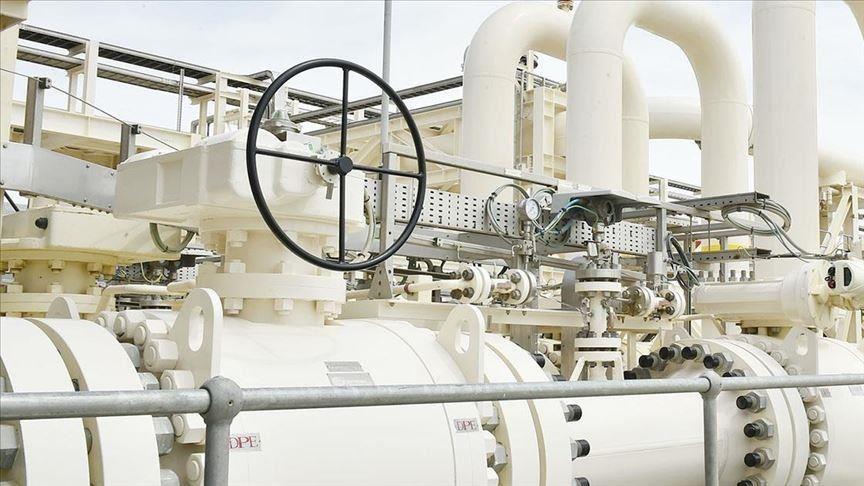Following the fall of Syria’s 61-year Ba’ath regime, discussions about reviving the ‘Qatar-Türkiye Natural Gas Pipeline,’ which was shelved in 2009, have resurfaced.
Experts stress the need to establish stability in Syria and ensure the safety of transit countries for such projects, while also highlighting the crucial role of liquefied natural gas (LNG) in Qatar’s energy strategy.
Justin Dargin, senior Middle East energy expert at the Middle East Council on Global Affairs, told Anadolu that the new government in Syria is likely to pursue closer relations with Türkiye and the Gulf states, creating an environment more conducive to regional collaboration.
Dargin underlined several reasons for why cross-boundary natural gas pipelines are increasingly becoming outdated.
‘Many gas-producing countries, including Qatar, now favor LNG due to its flexibility in arbitrage and its ability to reach high-cost markets, such as East Asia. The global LNG market is quickly resembling the international oil market in terms of fungibility and integration,’ he said.
Dargin said that when Qatar first proposed the pipeline concept in the early 2000s, it was seen as a way to avoid the high costs of LNG export.
‘Since then, advancements in LNG processing and transportation have significantly reduced costs, while the global expansion of LNG import terminals has made LNG the more practical option for global gas trade,’ he added.
– Qatar focuses on LNG
Dargin highlighted that Europe’s declining gas demand, driven by decarbonization policies, is expected to continue, prompting Qatar to shift its focus toward the more lucrative East Asian market in the medium to long term.
He said that this trend is also reflected in Qatar’s stance on the Dolphin gas pipeline, which supplies natural gas to the UAE and Oman.
While it was initially a key part of Qatar’s diversification strategy, Doha has repeatedly opted against expanding the project, prioritizing LNG as its primary export avenue instead, Dargin added.
‘Although a pipeline to Türkiye would align with Türkiye’s ambitions to become an energy hub and could benefit Europe’s energy diversification goals, it is unlikely to be a priority for Qatar at present,’ he noted.
However, with a potential LNG oversupply looming by the end of the decade, driven by capacity expansions from competitors and new producers, Dargin argued that, ‘Qatar might eventually consider pipelines as a way to secure long-term supply agreements and ensure market stability in an increasingly competitive environment, if the pricing structure is at a level that they would find attractive.’
– Middle East volatility causes obstacles
Dargin underlined that constructing a transboundary natural gas pipeline through the Middle East faces formidable geopolitical and economic challenges.
He said that geopolitically, the region’s volatility is a major obstacle, adding, ‘A pipeline passing through Syria, for example, would necessitate not only internal stabilization but also cooperation among multiple regional powers with competing interests.’
Past efforts to establish a pan-Gulf natural gas grid, centered on Qatari gas exports to other Gulf states, illustrate these challenges, he said.
‘Despite advanced talks decades ago, the project collapsed due to tensions between Qatar and Saudi Arabia, unresolved border disputes and broader regional rivalries, leaving the concept scaled down to the Dolphin gas pipeline, which supplies gas to Oman and the UAE,’ Dargin said.
He added that, similarly, ongoing territorial disputes, Syria’s internal instability and the involvement of external powers like Russia and Iran could further complicate negotiations and delay progress.
‘Rivalries between key stakeholders, such as Iran and the Gulf states, also risk undermining the regional security necessary for a project of this magnitude,’ he said.
Dargin added that economically, shifting market dynamics add to the complexity.
He noted that LNG has emerged as the preferred method of natural gas transportation due to its flexibility, declining costs and ability to access diverse markets, reducing the viability of fixed pipelines.
‘For Qatar, a pipeline would require guarantees of stable, long-term demand, which is increasingly uncertain as Europe’s natural gas consumption declines amid decarbonization policies,’ Dargin said.
‘Furthermore, the construction and long-term security of such infrastructure would demand significant investment and collaboration among international stakeholders – a challenging prospect in a politically fragmented and volatile region like the Middle East,’ he added.
– History of Qatar-Türkiye Natural Gas Pipeline
The idea of constructing a natural gas pipeline between Qatar and Türkiye first emerged in 2009 but was shelved due to various technical, economic, and geopolitical challenges.
At the time, the project aimed to transport Qatar’s vast natural gas reserves to European markets via Türkiye. However, the planned route through Syria was not realized due to political instability in the region and the Syrian regime’s opposition to the project.
With shifts in global energy dynamics and the fall of the Ba’ath regime in Syria, the possibility of reviving the project has once again come into focus.
While Qatar aims to diversify its LNG export routes and strengthen its influence in the energy market, Türkiye places significant importance on pipeline projects as part of its strategy to become a regional energy hub.
Amid Europe’s efforts to diversify its energy supply sources and growing competition over energy resources in the Eastern Mediterranean, the Qatar-Türkiye pipeline project is seen as a strategic step with both regional and global implications for energy balances.

